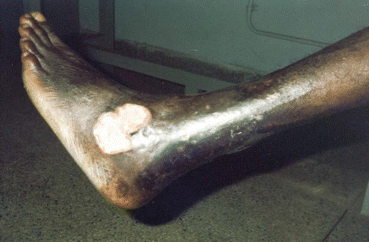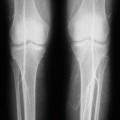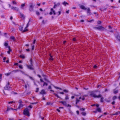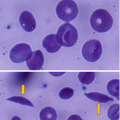(1)
Department of Surgery, Dar A lAlafia Medical Company, Qatif, Saudi Arabia
10.1 Introduction
The clinical manifestations of sickle cell anemia (SCA) are diverse.
Leg ulcers are a relatively common complication in patients with sickle cell anemia. They are considered as markers of disease severity.
It is most common in sickle cell anemia (HbSS) and less often seen in HbSC disease or HbS-β thalassemia.
The incidence of leg ulcers is also variable worldwide. It is commonly seen in African and Jamaican but considered extremely rare in Saudi Arabia. The reason for this variation is not known.
They cause significant physical disability and negative psychological and social impact.
Leg ulcers are rarely seen before age of 10 years and commonly affect areas with less subcutaneous fat, thin skin, and decreased blood flow (Fig. 10.1).

Fig. 10.1
A clinical photograph showing an adult patient with SCA and leg ulcer. Note the site and extent of the ulcer
They are more common in males than females.
The commonest sites for leg ulcers are:
The medial and lateral malleoli.
Less common sites include the anterior tibial area, dorsum of the foot, and posteriorly at the Achilles tendon (Fig. 10.2).

Fig. 10.2
A clinical photograph of an adult with SCA and leg ulcer involving the dorsum of the foot and lateral malleolus
The geographical distribution of leg ulcers is variable.
In the United States, 2.5 % of patients with SCA have leg ulcers.
In Jamaica, more than 40 % of patients with SCA have leg ulcers.
In Africa, 1.5–13.5 % of patients with SCA have leg ulcers.
In Saudi Arabia, leg ulcers are extremely rare.
The reason for this variation is not known but leg ulcers are known to be rare in patients with:
Associated alpha thalassemia
High Hb level
High HbF level
These factors may contribute to the very low incidence of leg ulcers in SCA patients from Saudi Arabia who are known to have high HbF levels, high Hb levels, and high associated alpha thalassemia.
10.2 Pathogenesis
The pathogenesis and etiology of leg ulcers in patients with SCA is not exactly known, and several factors may play role in their pathogenesis. These include:
Blood vessels obstruction by sickled RBC
Venous congestion
Trauma
Infection
Anemia
Thrombosis
Decreased NO bioavailability
Arteriovenous shunting
The fact that leg ulcers are known to be associated with priapism and pulmonary hypertension supports the role of decreased NO bioavailability in the pathogenesis of leg ulcers.
Stay updated, free articles. Join our Telegram channel

Full access? Get Clinical Tree







